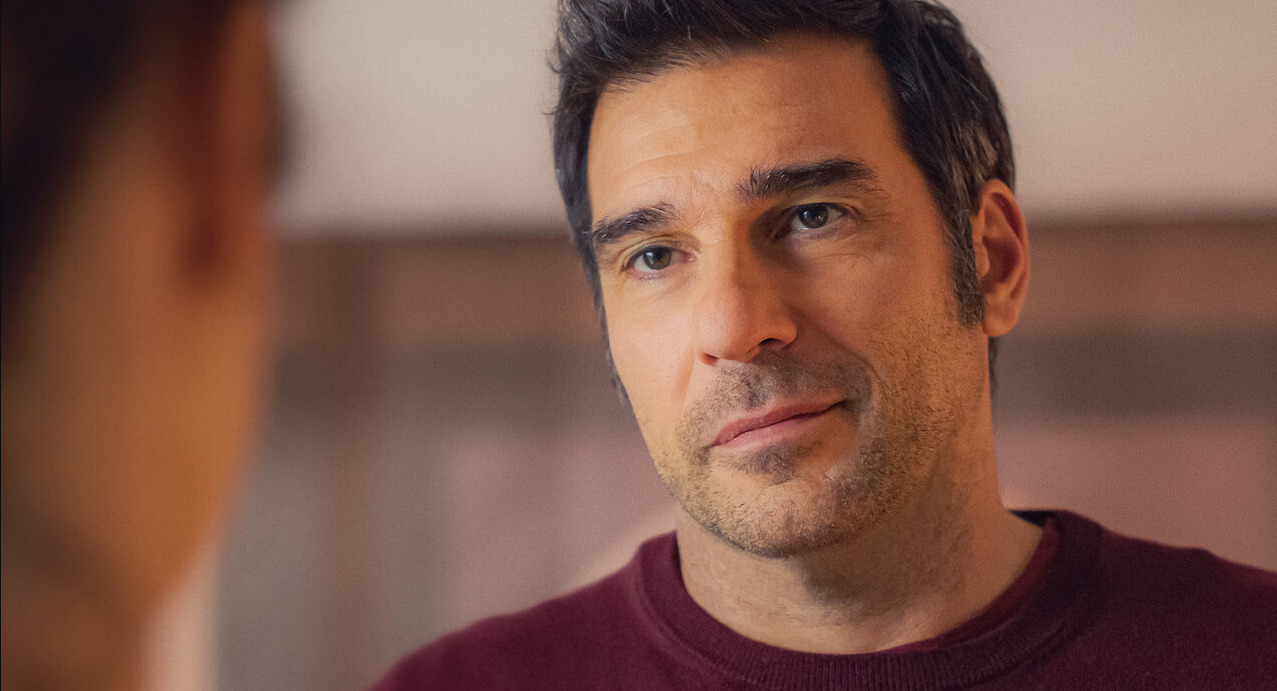‘Still Time,’ originally titled ‘Era Ora,’ is an Italian comedy drama directed by Alessandro Aronadio. This Netflix movie stars Edoardo Leo, Barbara Ronchi, and Mario Sgueglia, among others. It tells the story of Dante Agnosio, an avid workaholic, and how he watches the years of his life pass him by. Quite literally. When Dante wakes up the morning after his 40th birthday, he realizes that he has jumped one year ahead. As the day goes on, he finds himself constantly traveling forward a year every few hours at random intervals in the blink of an eye. As he moves through the years, he watches his relationship with his partner Alice go downhill while his professional life thrives. Helplessly stuck in this loop, Dante tries to find a way out and mend the damages that time keeps bringing.
‘Still Time’ uses a bizarre premise as a tool to tell a story about the importance of family and relationships and criticizes the corporate culture that prevents people from living their lives outside of their jobs. The themes explored in this movie are extremely relevant to the everyday lives of most people today. Feeling like you’re running out of time or that life is moving too fast are both things that most people have experienced at some point in their lives. Dante’s experience throughout the movie, however outlandish, is easy to relate to, which might make some people wonder if the film is based on true events. Here is everything you need to know about ‘Still Time’ and its connection to the non-fiction world.
Still Time is a Fictional Tale
No, ‘Still Time’ is not a true story. In the movie Dante, for some strange reason, ends up in a tricky time-traveling situation. On his 40th birthday, his partner Alice throws him a surprise party. However, Dante already has too much on his plate between work and other responsibilities, so he just barely manages to make it to the party. He’s constantly moving, always working, and never takes a minute to just enjoy life as it is in the moment. Of course, this is a condition that can be easily found in the real world.

In recent years there has been a rapid increase in people being encouraged to invest their time into being productive under capitalism as much as possible. The “Grind Culture” mindset leaves little room in people’s lives for personal relationships. Dante is a victim of this same mindset. He tells himself he works so much for the sake of his family, but as he watches the years pass by, he realizes that his work is the very thing that drives his family away.
In the film, Valerio, Dante’s close friend, references a couple of science experiments conducted to observe the nature of time and how one experiences it. According to Valerio, as a test, two clocks were timed. One took a round trip around the globe in a plane, while the other was left in Washington. When compared the clock that flew around the world was behind the one that stayed in Washington. The conclusion Valerio draws from this is that the faster you move through space— the faster you’ll experience time. The experiment Valerio was most likely talking about was the Hafele and Keating Experiment.
The Hafele and Keating Experiment is a real-world experiment conducted in 1971. Although the film never employs scientific reasoning to explain Dante’s experience, this experiment is used as a metaphorical explanation. Dante is moving through life too fast, which is why he is experiencing time in this peculiar way. Though it takes him some time to understand it, in the end, he slows down and tries to enjoy life without thinking about the past or the future— thus breaking out of the cycle.
Ultimately, ‘Still Time’ is not based on a true story. But it’s hard not to see parts of yourself and your own life reflected in Dante and his situation. There isn’t any one specific real-life instance that inspired the movie. Still, it echoes extremely relatable and mundane anxieties, thus portraying life through a realistic lens. The way this film depicts Dante’s workaholic attribute and how it affects his life is what makes the story feel so realistic. It urges its audience to slow down just for a second so that they don’t forget to live their lives.
Read More: Where Was Netflix’s Still Time Filmed?


You must be logged in to post a comment.